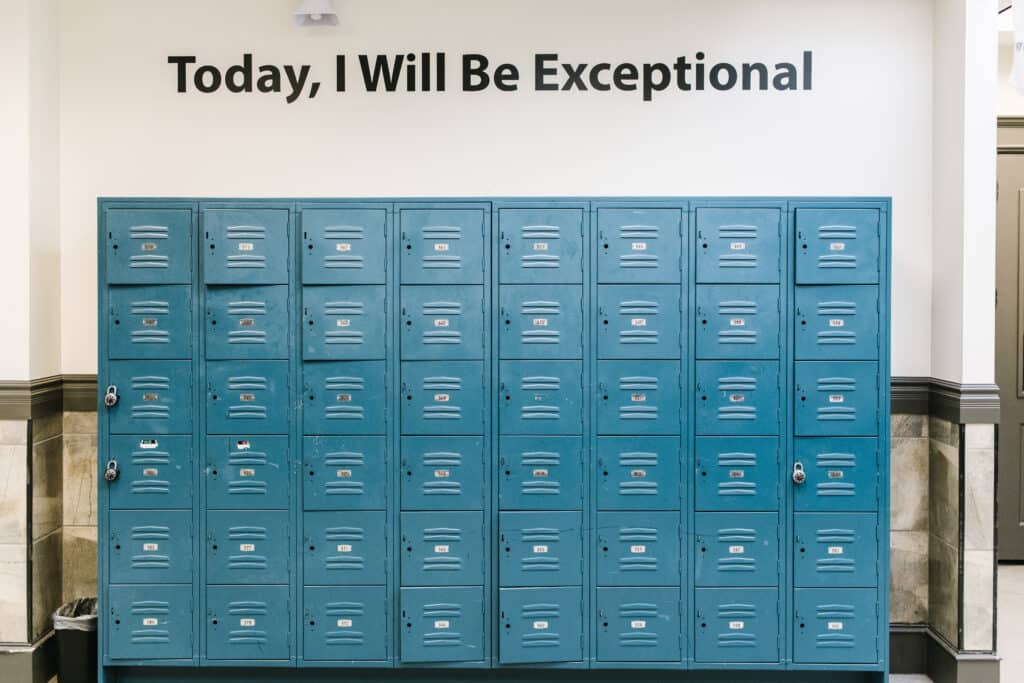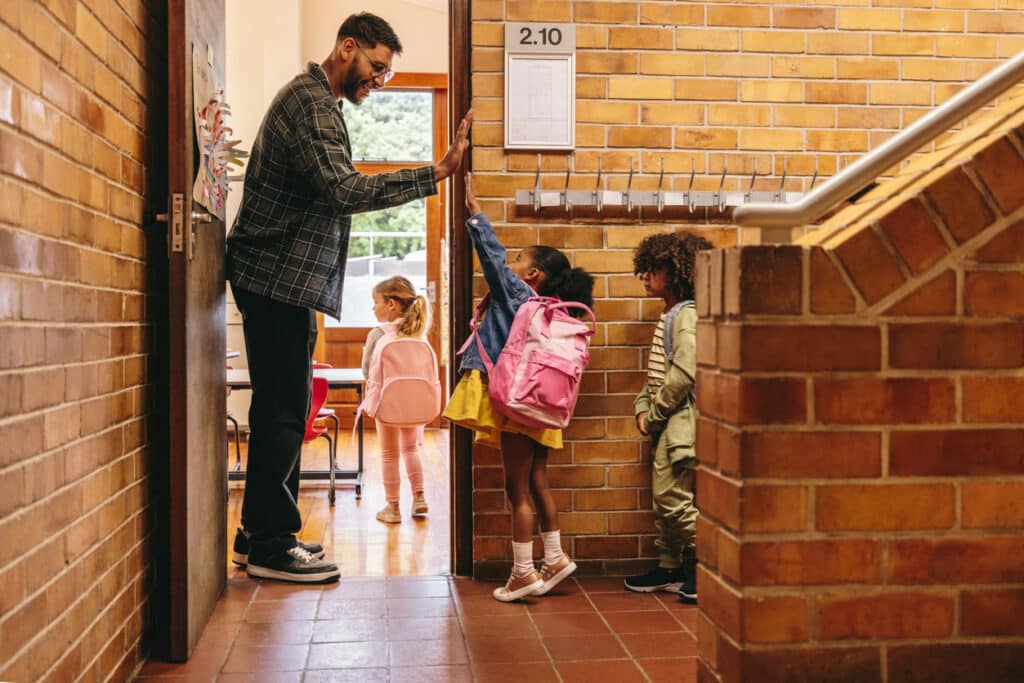Every school leader is asking the same question: How do we meet state standards and properly support staff and students when resources are scarce and funding is insufficient?
Student behavioral and mental health needs are rising, special education teams are stretched thin, staff are overwhelmed, and budgets that once felt manageable are now under pressure.
In the midst of these challenges, one often overlooked but incredibly valuable tool is gaining traction among forward-thinking districts: resource mapping.
In this guide, you’ll learn what resource mapping is, why it matters now more than ever, and how it can help your district strengthen behavioral and mental health services, optimize special education services, and improve your tiered system of supports.

What Is Resource Mapping?
Resource mapping is the process of identifying, organizing, and evaluating all the programs, services, and supports available to students. It helps schools see what supports they already have, where the gaps are, and how to make smarter, more strategic decisions about using every available resource. It does not require new funding or programs.
The process starts with understanding and organizing what is already in place, including general education, behavioral health, and special education services, and ensuring those supports are being used as effectively as possible.
These include both school-based and community resources, such as:
- School counselors, psychologists, and social workers
- Behavioral and mental health intervention programs
- Special education services and related service providers
- Tier 1 prevention initiatives like wellness or SEL curricula
- Tier 2 targeted supports, such as group counseling
- Tier 3 intensive or individualized services
- Partnerships with local mental health or special education providers
- After-school programs, mentoring, and tutoring
- Basic needs supports, such as food pantries or housing referrals
When schools map these resources clearly, they can reduce duplication, uncover underused services, and better connect students to the help they need. For example, aligning SPED and general education interventions more closely can lead to improved efficiency and stronger outcomes for students with IEPs.
Why Resource Mapping Matters for Schools Today
Even strong student support programs can become disjointed without a clear and coordinated system. Some services may be unknown to staff, and others may be overburdened or underutilized. Gaps can go unnoticed until a crisis arises.
Resource mapping brings visibility and alignment to a school’s support infrastructure. For schools navigating limited funding or staffing, this clarity can help leaders:
- Identify overlapping efforts
- Spot service gaps more easily
- Reduce inefficiencies
- Cut redundant programs to free up funds for high-need areas
- Prioritize high-impact resources
- Make data-informed decisions about what to sustain or scale back
This isn’t just about cost-cutting. It’s about increasing your return on investment by maximizing the impact of existing services, including both general education and special education supports.

Benefits of Resource Mapping in Education
Whether your district is just starting to formalize its behavioral health supports or already has systems in place, resource mapping can help by:
- Creating a shared understanding of available services
- Improving how students are referred and followed up with
- Helping teams align supports with the MTSS framework
- Supporting equity by increasing access and reducing barriers
- Informing grant applications and strategic plans
- Empowering staff with a clear, up-to-date directory of supports
- Encouraging collaboration between general education, special education, and community partners
Many schools discover resources they didn’t realize they had, or find that only a few people know how to access them. Making this information visible and usable has a measurable impact on efficiency, equity, and student outcomes.
How to Start the Resource Mapping Process
1. Pre-Mapping: Set the Scope and Build a Team
Start by asking:
- What kinds of resources do we want to map?
- Will we include only school-based services or also community partnerships?
- Are we focusing on mental and behavioral health, academic supports, special education, or basic needs?
Gather a cross-functional team that might include:
- School counselors, psychologists, or social workers
- Special education teachers and related service providers
- Teachers and instructional leaders
- Administrators
- Parents or caregivers
- Students, where appropriate
- Community partners (mental health providers, youth-serving organizations, etc.)
2. Mapping: Gather and Organize the Information
Collect details about each service or resource, such as:
- The tier it falls under (universal, targeted, or intensive)
- Who provides the service?
- Eligibility requirements
- Hours of operation and referral procedures
- Cost, insurance requirements, or accessibility considerations
- Contact information and location
You can organize this into a simple spreadsheet, a shared folder, or a visual map of services by tier.
3. Sustaining and Evaluating: Keep It Updated
A one-time inventory is helpful, but a living, evolving map is even better. Revisit your resource map at least annually. Use student outcome data, staff input, and family feedback to guide updates.
Keep these questions in mind:
- Are we seeing improvements in access and outcomes?
- Are staff using the map in real time to make referrals?
- Are new needs emerging that are not being met?
- Have any services changed, closed, or expanded?
Make resource mapping part of your ongoing school improvement, special education planning, or behavioral health strategy.

Connecting Resource Mapping to Tiered Supports and Special Education
Resource mapping supports key frameworks that many schools already use, including:
- Multi-Tiered System of Supports (MTSS)
- Positive Behavioral Interventions and Supports (PBIS)
- School-based mental and behavioral health programs
- Special education service coordination and compliance
These frameworks emphasize layered supports, equitable access, and continuous improvement. Resource mapping brings the “what” and “where” into sharper focus. This is especially important when students receive support from general and special education teams.
Resource mapping is not about adding more work. It is about working more intentionally with the people, services, and partnerships already in place. At a time when school leaders are asked to do more with less, resource mapping offers clarity, collaboration, and sustainability.
Who Is the Impact Resource Map For?
eLuma’s Impact Resource Map was designed specifically for education leaders responsible for managing student services across general education, special education, and mental health. Those who benefit most include:
- Directors of Student Services
- Special Education Directors and Coordinators
- MTSS and PBIS Coordinators
- Behavioral health and wellness leads
- School psychologists and social workers
- Grant writers and strategic planning teams
If you are seeking clearer visibility into what supports you have, where the gaps are, and how to optimize impact without adding new programs, the Impact Map is for you.

Need Help Getting Started? eLuma’s Impact Map Can Support You
If your team wants to take a structured, supported approach to resource mapping, eLuma’s Impact Map was explicitly designed for schools and districts.
The Impact Map helps schools:
- Inventory all mental health, behavioral, and special education supports across tiers
- Assess how well services align with student needs
- Identify redundancies and underused partnerships
- Improve collaboration between teams
- Build an actionable, sustainable plan to strengthen supports
It includes a shareable report for stakeholders and a multi-session consultation to review findings and ensure successful strategic planning through a facilitated, best-practices-based process.
The goal is to help you make the most of what you already have. You can free up funds, improve outcomes, and increase your return on investment without overloading your team.
If you are ready to build a stronger, more connected support system for your students, including those in special education, see where your district stands now with our free shortened Impact Resource Map Assessment.


